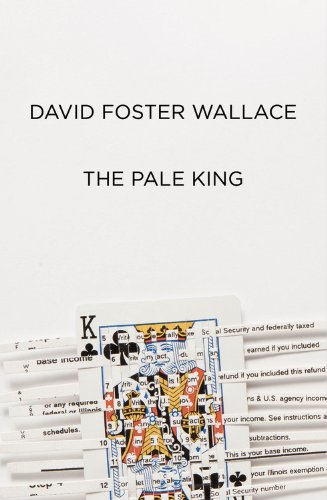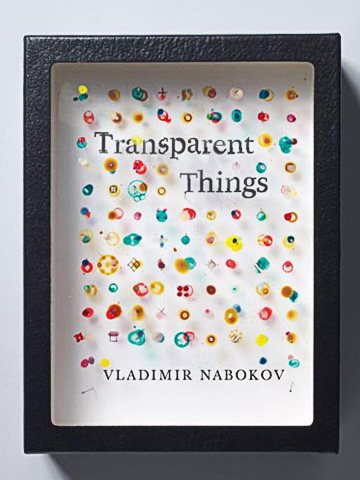Any well-seasoned book is likely to have a few book covers to its name: the hardcover edition, the trade paperback, the mass market paperback, the movie tie-in and various foreign editions, to name a few. Every year marks a different chance to re-imagine classic novels, so that Salinger’s “Catcher In the Rye” is immediately remembered as the stark white Little Brown edition with the rainbow corner, or the maroon background embossed in gold lettering, or the scarlet carousel horse rampaging upon a park, or some variation of Holden in his hunting cap. Someone works behind the scenes to decide whether the lettering is embossed, what visual elements should be incorporated, and, most importantly, who the book’s audience is. Comparing an unrepresentative and cartoonish cover of the acclaimed Sci-Fi novel “Ender’s Game” with the classic black paperback is an excellent example of the various ways in which publishers (and their marketing divisions) seek to portray the same book. Like any profitable company, their goal is to sell a product.

(Courtesy of Book Cover Archive)
Surprisingly, authors really don’t have a whole lot of say about cover art. About twelve or fifteen months before the book’s release date, the author is asked to submit an “art sheet” that describes character attributes, important scenes or anything that might help with thinking about themes the cover should address. The art department (and this can vary, some smaller publishers may not have in-house artists/illustrators, and so hire freelancers) usually doesn’t have time to read the book they’ve been assigned. Cover designers will then provide multiple ‘roughs,’ à la “Mad Men,” showcasing various cover ideas. These are shared with the Art Director, and at this time the author may be consulted. Suggestions are made, designs are tweaked, and voilà! A book is born. These artists are good at what they do. Just compare the cover of a tame romance with corset-ripping erotica, and you’ll see the difference in abs, abs and abs. Think about some of the most iconic, ubiquitous, eye-grabbing covers of the past few years, and there’s a reason why you turned around to check the title of that book some woman was reading on the subway. Stephanie Meyer’s “Twilight,” for example, with the sinful yet coy depiction of a blood-red apple, undoubtedly marked a resurgence of minimalist book covers, where bright symbolic objects were placed on stark backgrounds. In the years since Meyer published her quartet, a flurry of books have tried oh-so-hard to ride on the saga’s success, both conceptually and artistically.
Marketing to a specific audience, however, comes with setbacks, namely, the stereotypes that come with targeting certain readers. Genre fantasy in the 1970s and 80s was plagued by some really tasteless cover designs: the girls were generally large-breasted, wearing just a little bit of booty armor, wielding a staff or a sword or a willingness to be ravaged. To walk through a Barnes and Noble today, however, is not much different: be prepared to subject yourself to conspicuous marketing and thereby pass over books whose covers don’t necessarily match their stories. My personal favorite is the Chick lit package, by which everything is sold to me in a pink, frilly casing. If I’m twelve, there’s a tiara or a dress on the cover. If I’m twenty, I’m enticed with cosmopolitans, handbags, boys and a cute little dog.
The most disappointing marketing trend has been, undoubtedly, whitewashing. It seems hard to believe, but time and time again books with Protagonists of Color (POC) are portrayed as white on their covers. Sometimes this means hiring an Anglicized model, other times illustrating an obviously non-POC. The practice isn’t new, and it happens frequently enough to make me regularly scream “Really?!” at my computer. Two notable and controversial incidents of whitewashing were Justine Larbalestier’s “Liar” and Jaclyn Dolamore’s “Magic Under Glass.” Both are Young Adult (YA) novels published in 2009 by Bloomsbury with obviously white depiction of the protagonists, though Magic’s POC is described as brown and Liar’s as black. After a backlash that reached its peak in early 2010 (with media sites Salon and Jezebel making the loudest noise), Bloomsbury quickly retracted and reprinted the books with representative covers.

Bloomsbury is not the only publisher to blame, and quite a number of authors have seen extensive whitewashing in their books’ covers. Ursula K. Le Guin, Octavia Butler, and L.A. Banks, for example, have all found their POCs magically change color and/or race during their careers. Ms. Larbalesteir admitted on her website after the controversy with “Liar” that editors have frequently told her they “won’t take books with black covers” because they don’t sell, and are often shelved separately from more mainstream, ‘white’ books. Some say that a solution would be to simply not feature people on book covers, a fairly common practice in YA, where 80% of books feature real or illustrated representations of the protagonist. I advocate this approach only as an aesthetic preference for simplicity and letting the words speak for themselves, but I refuse to see this as an acceptable solution for a marketing apparatus that thinks readers can’t handle POCs. This aligns with my mentality that books tackling themes of race, ethnicity and sexuality shouldn’t be labeled as Latino, Asian-American, Gay fiction, etc. All of these books should instead be seen as addressing universal issues of identity. When we label a book as a “black book,” we imply white is normative and only a subsection of the population can identify with the book’s themes, or find it entertaining and enjoyable. That is unacceptable.
I am an almost twenty year-old, single, straight, white, Latina and, for good or ill, somewhere there is a book marketed to me. I have always been fascinated with advertising — a good billboard can make me double-take — and I feel that book covers are a great asset to fiction and nonfiction, enticing the reader with a promise.
wAnyone who has ever wandered past bookstore or library shelves knows how even a book spine can grab you with its thick or thin girth, the bold or curlicue or Goosebumps font demanding attention. Who can forget Daisy staring out of “The Great Gatsby,” “Lolita”’s vintage script, “Farenheit 451”’s Burning Man, the monochromatic “A Clockwork Orange” or the tree in “To Kill A Mockingbird” where Boo Radley hid his prized possessions? Who today doesn’t find “Freaknomics”’s orange in an apple, Steve Jobs’ latest biography or Emily Donoghue’s “Room,” visually arresting? The cover’s promise is to be everything you wanted to read and more; that first glimpse into the heart of a story whose two-hundred or so pages will take you on an adventure to another world.
Susana is a sophomore. You can reach her at smedeir1@swarthmore.edu.














